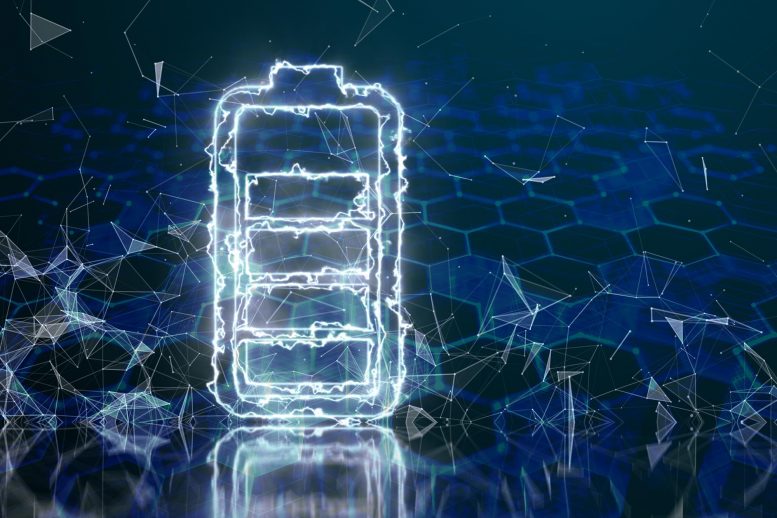
New lithium metal anode could lead to batteries that can pack more power per pound and last longer.
An MIT team has devised a lithium metal anode that could improve the longevity and energy density of future batteries.
New research by engineers at MIT and elsewhere could lead to batteries that can pack more power per pound and last longer, based on the long-sought goal of using pure lithium metal as one of the battery’s two electrodes, the anode.
The new electrode concept comes from the laboratory of Ju Li, the Battelle Energy Alliance Professor of Nuclear Science and Engineering and professor of materials science and engineering. It is described in the journal Nature, in a paper co-authored by Yuming Chen and Ziqiang Wang at MIT, along with 11 others at MIT and in Hong Kong, Florida, and Texas.
The design is part of a concept for developing safe all-solid-state batteries, dispensing with the liquid or polymer gel usually used as the electrolyte material between the battery’s two electrodes. An electrolyte allows lithium ions to travel back and forth during the charging and discharging cycles of the battery, and an all-solid version could be safer than liquid electrolytes, which have high volatility and have been the source of explosions in lithium batteries.
“There has been a lot of work on solid-state batteries, with lithium metal electrodes and solid electrolytes,” Li says, but these efforts have faced a number of issues.
One of the biggest problems is that when the battery is charged up, atoms accumulate inside the lithium metal, causing it to expand. The metal then shrinks again during discharge, as the battery is used. These repeated changes in the metal’s dimensions, somewhat like the process of inhaling and exhaling, make it difficult for the solids to maintain constant contact, and tend to cause the solid electrolyte to fracture or detach.
Another problem is that none of the proposed solid electrolytes are truly chemically stable while in contact with the highly reactive lithium metal, and they tend to degrade over time.
Most attempts to overcome these problems have focused on designing solid electrolyte materials that are absolutely stable against lithium metal, which turns out to be difficult. Instead, Li and his team adopted an unusual design that utilizes two additional classes of solids, “mixed ionic-electronic conductors” (MIEC) and “electron and Li-ion insulators” (ELI), which are absolutely chemically stable in contact with lithium metal.
The researchers developed a three-dimensional nanoarchitecture in the form of a honeycomb-like array of hexagonal MIEC tubes, partially infused with the solid lithium metal to form one electrode of the battery, but with extra space left inside each tube. When the lithium expands in the charging process, it flows into the empty space in the interior of the tubes, moving like a liquid even though it retains its solid crystalline structure. This flow, entirely confined inside the honeycomb structure, relieves the pressure from the expansion caused by charging, but without changing the electrode’s outer dimensions or the boundary between the electrode and electrolyte. The other material, the ELI, serves as a crucial mechanical binder between the MIEC walls and the solid electrolyte layer.
“We designed this structure that gives us three-dimensional electrodes, like a honeycomb,” Li says. The void spaces in each tube of the structure allow the lithium to “creep backward” into the tubes, “and that way, it doesn’t build up stress to crack the solid electrolyte.” The expanding and contracting lithium inside these tubes moves in and out, sort of like a car engine’s pistons inside their cylinders. Because these structures are built at nanoscale dimensions (the tubes are about 100 to 300 nanometers in diameter, and tens of microns in height), the result is like “an engine with 10 billion pistons, with lithium metal as the working fluid,” Li says.
Because the walls of these honeycomb-like structures are made of chemically stable MIEC, the lithium never loses electrical contact with the material, Li says. Thus, the whole solid battery can remain mechanically and chemically stable as it goes through its cycles of use. The team has proved the concept experimentally, putting a test device through 100 cycles of charging and discharging without producing any fracturing of the solids.
Li says that though many other groups are working on what they call solid batteries, most of those systems actually work better with some liquid electrolyte mixed with the solid electrolyte material. “But in our case,” he says, “it’s truly all solid. There is no liquid or gel in it of any kind.”
The new system could lead to safe anodes that weigh only a quarter as much as their conventional counterparts in lithium-ion batteries, for the same amount of storage capacity. If combined with new concepts for lightweight versions of the other electrode, the cathode, this work could lead to substantial reductions in the overall weight of lithium-ion batteries. For example, the team hopes it could lead to cellphones that could be charged just once every three days, without making the phones any heavier or bulkier.
One new concept for a lighter cathode was described by another team led by Li, in a paper that appeared last month in the journal Nature Energy, co-authored by MIT postdoc Zhi Zhu and graduate student Daiwei Yu. The material would reduce the use of nickel and cobalt, which are expensive and toxic and used in present-day cathodes. The new cathode does not rely only on the capacity contribution from these transition-metals in battery cycling. Instead, it would rely more on the redox capacity of oxygen, which is much lighter and more abundant. But in this process the oxygen ions become more mobile, which can cause them to escape from the cathode particles. The researchers used a high-temperature surface treatment with molten salt to produce a protective surface layer on particles of manganese- and lithium-rich metal-oxide, so the amount of oxygen loss is drastically reduced.
Even though the surface layer is very thin, just 5 to 20 nanometers thick on a 400 nanometer-wide particle, it provides good protection for the underlying material. “It’s almost like immunization,” Li says, against the destructive effects of oxygen loss in batteries used at room temperature. The present versions provide at least a 50 percent improvement in the amount of energy that can be stored for a given weight, with much better cycling stability.
The team has only built small lab-scale devices so far, but “I expect this can be scaled up very quickly,” Li says. The materials needed, mostly manganese, are significantly cheaper than the nickel or cobalt used by other systems, so these cathodes could cost as little as a fifth as much as the conventional versions.
References:
“Li metal deposition and stripping in a solid-state battery via Coble creep” by Yuming Chen, Ziqiang Wang, Xiaoyan Li, Xiahui Yao, Chao Wang, Yutao Li, Weijiang Xue, Daiwei Yu, So Yeon Kim, Fei Yang, Akihiro Kushima, Guoge Zhang, Haitao Huang, Nan Wu, Yiu-Wing Mai, John B. Goodenough and Ju Li, 3 February 2020, Nature.
DOI: 10.1038/s41586-020-1972-y
“Gradient Li-rich oxide cathode particles immunized against oxygen release by a molten salt treatment” by Zhi Zhu, Daiwei Yu, Yang Yang, Cong Su, Yimeng Huang, Yanhao Dong, Iradwikanari Waluyo, Baoming Wang, Adrian Hunt, Xiahui Yao, Jinhyuk Lee, Weijiang Xue and Ju Li, 12 December 2019, Nature Energy.
DOI: 10.1038/s41560-019-0508-x
The research teams included researchers from MIT, Hong Kong Polytechnic University, the University of Central Florida, the University of Texas at Austin, Brookhaven National Laboratories in Upton, New York. The work was supported by the National Science Foundation.

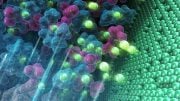

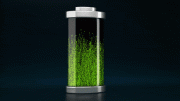
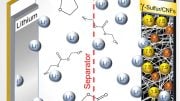


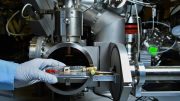
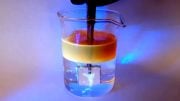
Be the first to comment on "More Powerful Batteries Possible With MIT’s New Electrode Design"